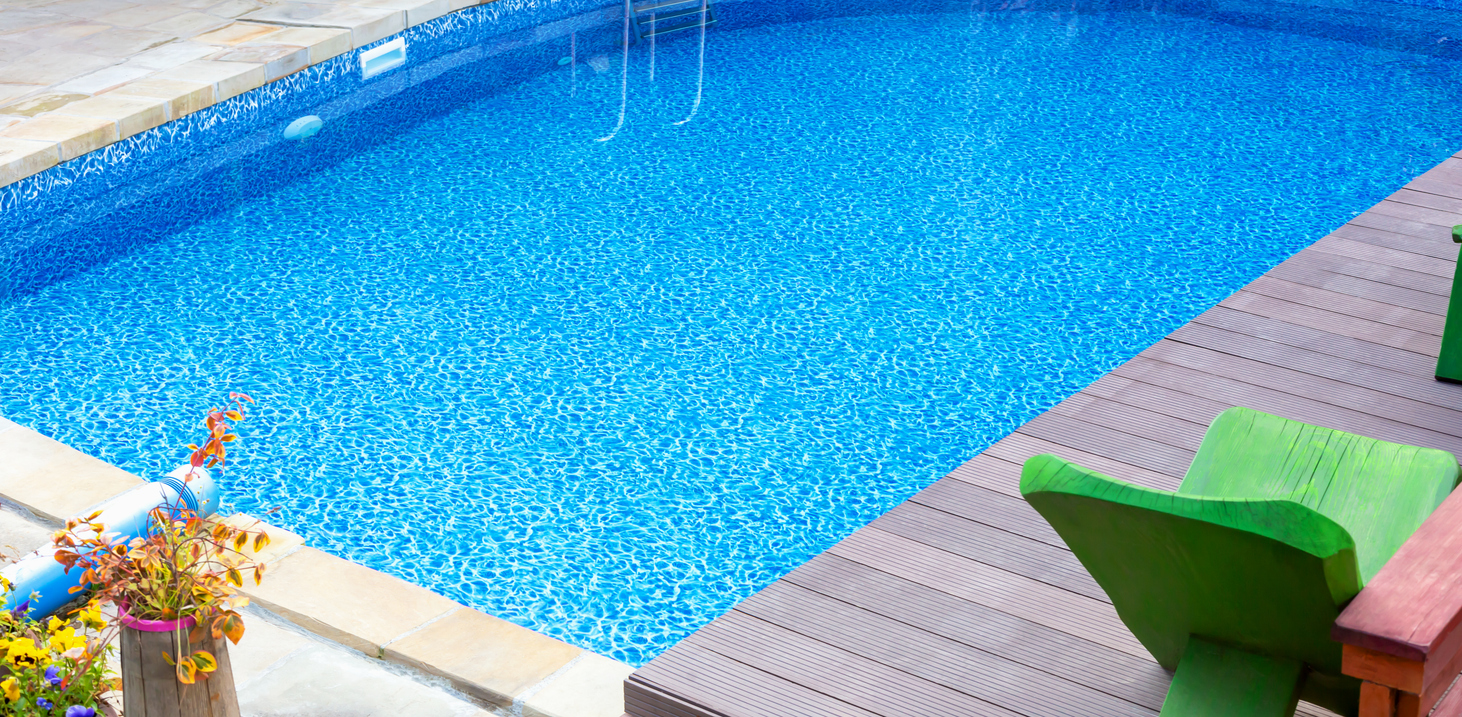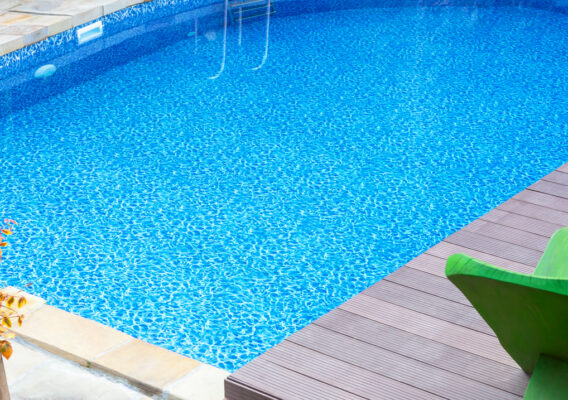Installing a Swimming Pool Liner: Common Issues and How to Avoid Them

Table of Contents
How to Avoid Common Pool Liner Installation Issues
By understanding the common issues that occur when installing a swimming pool liner, you can better prepare yourself and your pool to avoid these pitfalls. At The Swimming Pool Store, we specialize in professional liner installations for inground pools, offering expert guidance to ensure a smooth and worry-free process.
Vinyl pool liners serve as a waterproof barrier, providing both aesthetic appeal and protection to your swimming pool structure. Selecting the right liner involves considering factors such as your pool’s design, usage, and environmental conditions.
Choosing a high-quality liner with the proper thickness and durability can significantly impact your pool’s performance and lifespan. Vinyl liners come in various patterns, colors, and thickness levels designed to withstand different usage conditions and climates. Selecting the right liner ensures it will fit correctly, resist fading, and maintain its flexibility and appearance.
Selecting the Right Liner for Your Pool
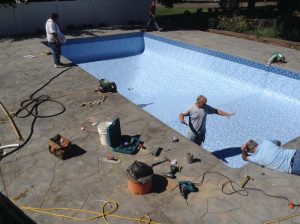 When planning your vinyl liner pool installation, it’s essential to choose a liner that matches your pool’s specific dimensions and requirements. Proper measurement and professional consultation help prevent issues like wrinkles, leaks, and premature wear.
When planning your vinyl liner pool installation, it’s essential to choose a liner that matches your pool’s specific dimensions and requirements. Proper measurement and professional consultation help prevent issues like wrinkles, leaks, and premature wear.
Key considerations include:
- Accurate Measurements: Precise measurements ensure a proper fit, preventing wrinkles and gaps.
- Quality and Warranty: A high-quality liner with a comprehensive warranty protects your investment.
- Professional Guidance: Working with experienced professionals ensures a seamless installation and optimal results.
Making informed decisions at this stage helps avoid common pool liner installation problems and extends the longevity of your liner.
Common Pool Liner Installation Issues
Even with careful planning, vinyl pool liner installation problems can still occur. These issues, if not addressed proactively, can negatively impact your pool’s appearance, structure, and overall lifespan. Knowing what to watch out for is key to ensuring a successful installation and long-term enjoyment of your swimming pool.
Surface and Preparation Issues
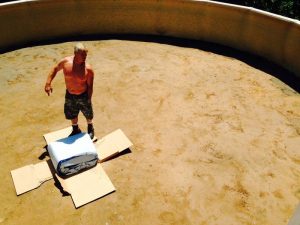 Getting your pool’s surface ready is one of the most important parts of successfully installing a pool liner. If it’s not done right, you could end up with wrinkles, bumps, or other problems that affect both the look and structure of your pool. Some of the most common prep issues include:
Getting your pool’s surface ready is one of the most important parts of successfully installing a pool liner. If it’s not done right, you could end up with wrinkles, bumps, or other problems that affect both the look and structure of your pool. Some of the most common prep issues include:
- Uneven Surfaces: Failing to adequately smooth and compact the underlying sand, vermiculite, or concrete surface can create visible imperfections or wrinkles after liner installation.
- Debris and Rocks: Foreign objects or debris left beneath the liner can cause permanent damage, leading to leaks or punctures over time.
- Improper Surface Repairs: Neglecting necessary repairs to pool walls or floors before liner installation can shorten the liner’s lifespan.
Ensuring thorough pool preparation prevents many common issues, saving you time, frustration, and additional costs later. The swimming pool technicians at The Swimming Pool Store perform meticulous surface preparation when professionally installing a swimming pool liner. Due to the malleability of sand bottoms, visual imperfections may be unavoidable although our technicians make every effort to smooth and compact sand bottom pools and minimize the presence of any imperfections.
Structural Problems
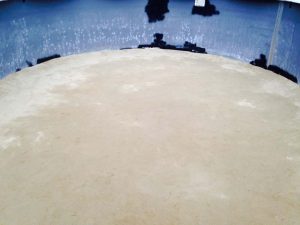 Your pool’s structure plays a crucial role in properly securing the liner. Structural problems encountered during installation often involve issues with walls, fittings, and support structures. Common structural issues include:
Your pool’s structure plays a crucial role in properly securing the liner. Structural problems encountered during installation often involve issues with walls, fittings, and support structures. Common structural issues include:
- Corrosion on Steel Walls: Steel walls, common in vinyl liner pools, can develop rust or corrosion over time. Often, corrosion isn’t visible until the old liner is removed, and repairs or replacements may be necessary.
- Obsolete or Damaged Pool Components: Outdated gaskets, faceplates, skimmers, main drains, steps, or returns may not provide a proper seal. Upgrading these components is sometimes required, incurring additional expenses.
Regular inspections and maintenance of your pool’s structural components help avoid unexpected costs and delays during liner installation.
Water Management Complications
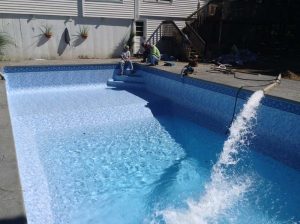 Water plays a significant role when installing a swimming pool liner, both in removing old water and replacing it after the new liner is installed. Common water-related installation issues include:
Water plays a significant role when installing a swimming pool liner, both in removing old water and replacing it after the new liner is installed. Common water-related installation issues include:
- Groundwater and Drainage Problems: Poor property grading or groundwater seepage can cause pool surface deformation, delaying installation and necessitating repairs.
- Improper Water Removal: Incorrectly draining your existing pool water can lead to structural damage or landscaping issues.
- Water Delivery Delays: Issues coordinating timely water delivery can cause liner installation delays, negatively impacting the quality and fit of the liner.
Careful planning and professional coordination of water management is necessary prior to and during the liner installation to ensure success.
Wrinkles and Imperfections
Wrinkles are among the most common, and most frustrating, pool liner installation issues. Not only do they detract from the visual appeal of your swimming pool, but they can also create areas vulnerable to premature wear and damage. Understanding what causes wrinkles and how to avoid or correct them is essential for ensuring your pool liner remains smooth and visually appealing.
Causes of Pool Liner Wrinkles
Wrinkles typically result from mistakes made during installation or inadequate preparation. Common causes include:
- Incorrect Liner Measurements:
If the liner isn’t accurately measured or properly manufactured for your pool’s dimensions, it won’t fit tightly, leading to wrinkles or sagging. - Insufficient Water During Filling:
A newly installed liner requires immediate filling with water to ensure proper tension and fit. Delays or insufficient water volume initially can allow wrinkles to form. - Poor Surface Preparation:
An uneven surface or underlying debris such as rocks, sticks, or sand lumps can lead to wrinkles or imperfections appearing after installation. - Groundwater Issues:
Rising groundwater beneath the pool liner can push and lift areas of the liner, creating noticeable wrinkles or uneven spots.
Preventing and Removing Pool Liner Wrinkles
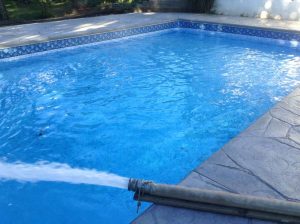 While it’s best to prevent wrinkles from occurring in the first place, it’s possible to address minor wrinkles once they’ve appeared. Here’s how:
While it’s best to prevent wrinkles from occurring in the first place, it’s possible to address minor wrinkles once they’ve appeared. Here’s how:
- Proper Measurement and Installation:
Professional measurement and installation significantly reduce the chance of wrinkles. A reputable installer takes precise measurements and uses correct installation techniques to ensure a tight, wrinkle-free fit. - Smooth and Level Surface Prep:
Thorough surface preparation, including leveling, compacting sand or vermiculite, and removing debris, creates an even surface for the liner to lie smoothly. - Prompt Water Fill:
Arranging timely water delivery ensures the liner settles evenly and securely during installation, minimizing wrinkle formation. - Using a Vacuum System:
Professional installers often use a vacuum system to suction out air between the liner and pool walls during installation, greatly reducing the likelihood of wrinkles.
If wrinkles do appear, professional pool technicians may have methods for reducing or removing them. Proper preparation, expert installation, and prompt attention to any visible issues are key steps toward achieving a smooth, wrinkle-free vinyl pool liner installation.
Liner Leaks and Seam Issues
Leaks in a vinyl pool liner can be difficult to detect and even harder to repair if the issue isn’t identified early. Whether caused by physical damage, seam failure, or aging material, leaks are among the most common and frustrating vinyl pool liner installation problems. Fortunately, most are preventable with proper installation, quality materials, and routine maintenance.
Identifying Pool Liner Leaks
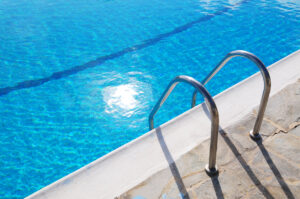 Pinpointing a leak in a vinyl liner pool typically requires close inspection and sometimes professional leak detection tools. Telltale signs of a leak include:
Pinpointing a leak in a vinyl liner pool typically requires close inspection and sometimes professional leak detection tools. Telltale signs of a leak include:
- A noticeable drop in water level that isn’t caused by evaporation or splash-out.
- Damp or soft ground around the pool perimeter.
- Visible tears or holes in the liner surface, particularly near corners, steps, or fittings.
It’s important to address potential leaks quickly to prevent water damage to the pool structure or surrounding landscape.
Causes of Liner Leaks
Several factors can lead to leaks in a newly installed or aging pool liner:
- Punctures from sharp debris under the liner, such as rocks or sticks not removed during surface prep.
- Improperly sealed gaskets around skimmers, returns, steps, or lights.
- Worn fittings or obsolete hardware that can no longer provide a watertight seal.
- Undetected corrosion behind the liner creating sharp edges that eventually puncture the material.
In many cases, the leak may be localized and repairable with a vinyl patch. But if the damage is extensive or near a seam, a replacement may be required.
Seam Separation and Manufacturing Defects
Vinyl liners are made by heat-welding multiple sheets together, creating seams that can be vulnerable if not properly bonded. Issues like seam separation or delamination may not be apparent at first but can lead to serious water loss over time.
While rare, manufacturer defects such as misaligned seams, poor bonding, or material inconsistencies can occur. This is why it’s critical to choose a reputable liner brand and work with a pool professional who understands how to inspect and report these issues promptly.
If a manufacturer defect is suspected, The Swimming Pool Store will advocate on your behalf with the liner manufacturer. However, it’s important to note that warranty claims are subject to the manufacturer’s discretion, and visible seams are not considered defects.
Pool Liner Installation Cost
Understanding the cost of installing a swimming pool liner helps homeowners plan their budget and avoid surprise expenses. While prices vary, knowing what influences the total cost can help you make informed decisions and prepare for any additional work that may arise during the installation.
Pool Liner Installation Cost Factors
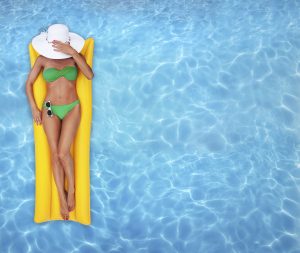 Several variables impact the pool liner installation cost, including:
Several variables impact the pool liner installation cost, including:
- Pool Size and Shape: Larger or uniquely shaped pools require more material and labor.
- Liner Thickness and Pattern Selection: Thicker liners or premium designs typically cost more but offer greater durability.
- Condition of Existing Pool Structure: Surface damage, rust, or outdated hardware can add repair costs.
- Access to the Pool Area: Pools with limited access may require additional labor or equipment.
Additional Costs to Consider
Many installations require expenses beyond the liner itself:
- Surface Repairs: Cracks in the floor or corrosion on walls may need to be addressed.
- Hardware Upgrades: New faceplates, gaskets, and fittings if existing ones are outdated or obsolete.
- Water Delivery: Customers are responsible for paying for initial water loads needed to set the liner.
The typical cost of installing a pool liner can range widely based on these factors. The Swimming Pool Store provides clear, upfront pricing and will discuss any additional charges before work begins.
Pool Liner Installation Mistakes and How to Avoid Them
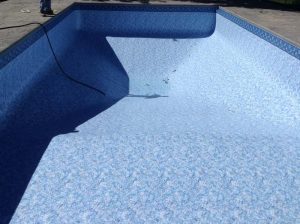 Even the highest-quality liner won’t perform well if installation mistakes are made. Whether caused by inexperience, poor planning, or rushing the process, pool liner installation mistakes can result in leaks, wrinkles, and shortened liner lifespan.
Even the highest-quality liner won’t perform well if installation mistakes are made. Whether caused by inexperience, poor planning, or rushing the process, pool liner installation mistakes can result in leaks, wrinkles, and shortened liner lifespan.
Common pool liner installation mistakes include:
- Improper Measurements: Liners that don’t match the pool’s dimensions will never fit properly.
- Inadequate Surface Prep: Leaving debris, uneven sand, or unaddressed cracks beneath the liner causes imperfections or damage.
- Insufficient Water Fill: Delays in adding water after installation can allow the liner to shift, wrinkle, or shrink.
- Ignoring Structural Issues: Proceeding with installation without repairing visible rust, rot, or loose fittings leads to future failures.
Tips to avoid these problems when installing a swimming pool liner:
- Work with an experienced professional who specializes in vinyl pool liner installation problems.
- Make sure you have the liner measured and manufactured specifically for your pool.
- Schedule water delivery to coincide with the liner install to ensure the liner sets properly.
- Inspect the pool structure before liner removal to catch issues early.
Choosing a reputable installer like The Swimming Pool Store greatly reduces the risk of these mistakes and helps ensure a smooth, long-lasting pool liner installation.
Repair or Replace: Deciding What’s Best
When your vinyl liner is showing signs of wear, leaks, or damage, it can be difficult to decide whether to patch it or opt for a full replacement. Each situation is unique, and the right decision depends on the liner’s age, condition, and the extent of the issue.
When is Liner Repair the Right Choice?
Pool liner repair can be effective when:
- A small tear or puncture is isolated and not near a seam.
- The liner is relatively new (under 5 years old).
- The pool structure is in good condition with no underlying issues.
Vinyl patch kits can be a fast and affordable solution in these scenarios. However, patching isn’t a permanent fix and should be monitored closely.
When to Consider Pool Liner Replacement
 A new liner may be the better choice if:
A new liner may be the better choice if:
- Multiple leaks or wrinkles have developed.
- The liner is over 8–10 years old and showing signs of brittleness or fading.
- Seams have failed or the material has stretched, sagged, or slipped out of track.
Learn more: Can I Repair My Vinyl Pool Liner with a Pool Patch? Knowing when to repair or replace your pool liner helps you make the most of your investment and prevents further damage to your pool.
Preparing for Your Pool Liner Replacement
Proper preparation can make a big difference in ensuring a smooth liner installation with minimal delays. Before your scheduled service date, it’s important to take a few proactive steps.
What to do before installation day:
- Clear Access to the Pool: Ensure the work area is free of furniture, landscaping, or debris that could block access.
- Locate Winterization Materials: Make sure any plugs, fittings, or custom hardware are accessible for the crew.
- Coordinate Water Delivery: Unless you have a reliable water source, plan for professional water delivery, at least 12,000 gallons for most pools.
Weather and Scheduling Considerations
Liner installations are weather-dependent. Heavy rain or cold temperatures can cause delays, so it’s best to remain flexible. Our team will always communicate and reschedule if needed to ensure the best quality result. For a full guide, check out: How to Prep for Your Inground Pool Liner Replacement
Professional Installation vs. DIY
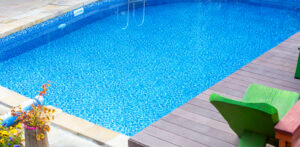
While some experienced homeowners may consider tackling liner installation themselves, it’s a complex job with little room for error. Even a small mistake can lead to expensive consequences.
There are many reasons why hiring a swimming pool professional is the way to go:
- Precision Measurement: Custom liners must be accurately measured to avoid sagging or stretching.
- Specialized Tools: Professionals use vacuums and tamping equipment for a tight, wrinkle-free fit.
- Structural Assessments: Experienced installers can identify hidden problems with the pool shell, walls, or plumbing.
- Warranty Protection: Professional installation may be required to maintain your liner’s warranty coverage.
Trusting a licensed, experienced company like The Swimming Pool Store helps you avoid unnecessary stress and protects your investment.
Above-Ground Pool Liner Installations
At The Swimming Pool Store, we specialize in inground vinyl pool liner installations and do not currently provide above-ground liner services. However, we’re happy to refer you to trusted professionals in the area for above-ground pool liner installation and repair. If you need guidance, just give us a call.
Frequently Asked Questions About Pool Liner Installation Problems
1. What causes wrinkles in a vinyl pool liner, and can they be prevented?
How to get wrinkles out of pool liner when installing is a common question. Wrinkles in a vinyl pool liner can result from several factors, including improper installation, incorrect liner size, or water chemistry imbalances. Installing the liner on a warm day and ensuring the pool floor is smooth can help prevent wrinkles. Additionally, maintaining balanced water chemistry is crucial. Learn more about How to Prep for Your Inground Pool Liner Replacement.
2. Why is my pool liner slipping out of the track, and how can it be fixed?
A pool liner slipping out of its track is a common issue due to age-related stretching, improper installation, or a widened track. Pool professionals often use a liner lock or replace the track to secure the liner properly. It’s important to have this issue evaluated promptly to prevent further complications.
3. How can I tell if my pool liner is leaking?
Signs of a leaking pool liner include a noticeable drop in water level, soggy areas around the pool, or visible tears. Conducting a bucket test can help determine if the water loss is due to evaporation or a leak. For minor leaks, patch kits may suffice, but significant damage often requires professional repair or replacement. Learn more about Can I Repair My Vinyl Pool Liner with a Pool Patch?.
4. What are common mistakes during pool liner installation?
Common mistakes include inaccurate measurements, inadequate surface preparation, and rushing the installation process. These errors can lead to wrinkles, leaks, or premature liner failure. Hiring experienced professionals is the best way to get the most life out of your liner and avoid mistakes when installing a swimming pool liner. Learn more about professional Pool Liner Installation.
5. When should I consider replacing my pool liner instead of repairing it?
If your pool liner is over 8-10 years old, has multiple leaks, or shows signs of significant wear like fading or brittleness, replacement is often more cost-effective than repair. Learn more about the many benefits of a Pool Liner Replacement.
 Installing a swimming pool liner requires careful planning, expert preparation, and precise execution. From wrinkles and leaks to water delivery and hardware upgrades, knowing what can go wrong, and how to prevent it, will save you time, money, and frustration.
Installing a swimming pool liner requires careful planning, expert preparation, and precise execution. From wrinkles and leaks to water delivery and hardware upgrades, knowing what can go wrong, and how to prevent it, will save you time, money, and frustration.
Whether you’re planning your first liner replacement or looking to ensure a flawless installation, The Swimming Pool Store brings over 50 years of trusted experience to every job. Our swimming pool technicians are committed to delivering seamless, professional liner installations that keep your pool in great shape for years to come.
The Swimming Pool Store has been a trusted source for vinyl liner installation and pool renovation services in Connecticut for over five decades. We provide expert installation, thorough inspections, and high-quality materials to prevent common pool liner problems. Contact us today for answers to all your questions about installing a swimming pool liner.

